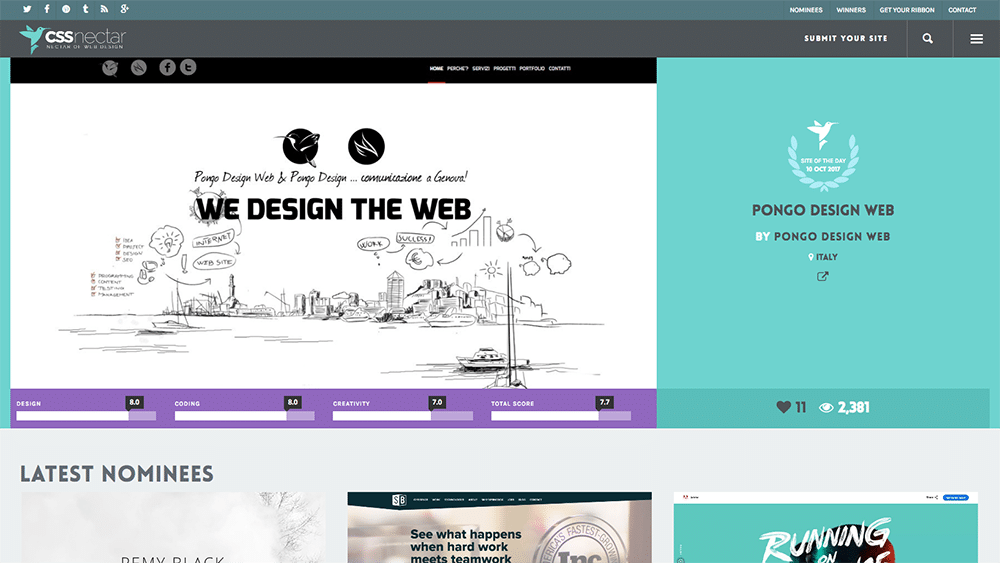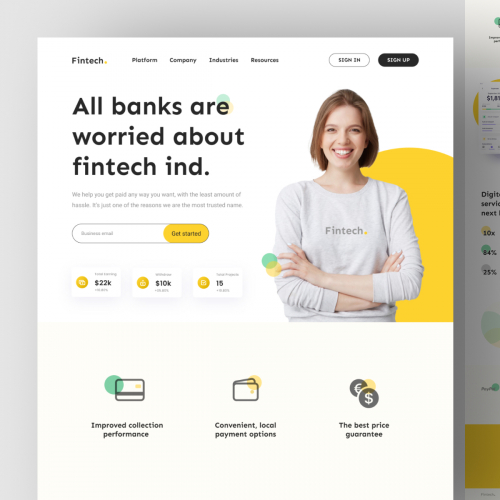How Website Design Impacts Brand Perception and Trustworthiness
How Website Design Impacts Brand Perception and Trustworthiness
Blog Article
The Ultimate Overview to Modern Website Style Trends
In the ever-evolving electronic landscape, modern-day internet site design patterns play an essential duty fit customer experience and involvement. From the increase of minimal layout concepts that focus on simpleness to the impact of strong typography in defining brand identification, each element adds to a cohesive on-line presence. The emphasis on mobile-first and receptive methods, alongside cutting-edge microinteractions, better enhances functionality. The growing focus on lasting web design methods shows a dedication to ecological duty. These patterns collectively elevate vital concerns concerning the future of effective internet layout and what it implies for businesses and customers alike.
Minimalist Layout Principles
Minimalist style principles stress the idea that less is much more, promoting for simpleness and functionality in visual interaction. This method strips away unneeded aspects, focusing rather on crucial parts that share the desired message effectively. By prioritizing quality, minimalist layout enhances individual experience, allowing site visitors to browse websites easily.
Core tenets of minimal style include using sufficient white space, which develops a sense of balance and company. This negative room not just routes the audience's focus to essential components but likewise fosters a relaxing visual ambience. In addition, a minimal color scheme is frequently used, using single plans or soft shades to preserve aesthetic cohesion and avoid frustrating the user.
Typography plays a critical function in minimal style, where legible typefaces are picked for their simplicity and effectiveness in interacting material. Graphics and pictures are conserved, making sure that they offer a function instead of distract from the overall message. Inevitably, minimal design principles cultivate a concentrated environment that urges individuals to engage with the material, enhancing the overall performance of modern web site design. This fad reflects a growing gratitude for thoughtful, user-centric looks in electronic areas.
Bold Typography Options
Embracing strong typography choices has become a defining characteristic of modern-day web site design, as it efficiently records focus and conveys strong messaging. Designers are progressively using typography not merely as a useful element but as an essential visual part that improves the total visual and customer experience.

Furthermore, the association of vibrant typography with minimalist layout principles enables for striking contrasts, boosting readability while preserving visual appeal. Making use of whitespace around vibrant text even more highlights its value, ensuring that the message reverberates with the audience.
As electronic landscapes become extra competitive, leveraging bold typography enables brands to differentiate themselves and leave a lasting perception. The cautious selection of font styles and their application can stimulate emotions, develop tone, and drive action, making vibrant typography an indispensable tool in modern site layout. Eventually, it is a powerful way to enhance storytelling and make sure that vital messages are not only seen yet additionally really felt.
Mobile-first and responsive Layout
Mobile-first and receptive layout has actually arised as a vital concept in modern web site growth, reflecting the boosting dependence on mobile tools for accessing on the internet content. As customer actions shifts in the direction of mobile browsing, designers should prioritize producing experiences that adjust seamlessly throughout different display sizes and resolutions.
A receptive style makes certain that a site instantly readjusts its layout, images, and capability based on the tool being made use of. Mobile-first style supporters for creating websites initially for smaller displays, subsequently scaling up to bigger displays.
Carrying out responsive and mobile-first concepts not just deals with individual choices but also straightens with seo (SEO) methods. Significant online search engine, like Google, prioritize mobile-friendly websites in their rankings, making it crucial for organizations to adopt these design strategies. In an affordable digital landscape, embracing receptive and mobile-first design is not simply an option; it is crucial for guaranteeing availability and involvement with a diverse target market.
Engaging Microinteractions
Microinteractions play an essential role in enhancing user engagement and total internet site experience, particularly in the context of responsive and mobile-first design. These refined style aspects additional reading offer prompt feedback to users, making interactions extra intuitive and pleasurable. Instances include button animations, alert notifies, and packing indications, which not only guide users yet additionally produce a sense of connection with the user interface.
Including appealing microinteractions can considerably improve usability by lowering cognitive lots. When customers receive visual or acoustic comments upon carrying out actions, such as clicking a switch or submitting a form, they feel much more confident in their selections. This fosters a smoother navigation experience, ultimately raising customer retention.

As site layout fads continue to develop, the relevance of microinteractions can not be overemphasized. They function as the subtle yet powerful touchpoints that change regular communications into phenomenal experiences, thereby boosting the overall effectiveness of contemporary web style.
Lasting Website Design Practices
Sustainable website design practices are coming to be progressively crucial as the electronic landscape grows and environmental concerns increase. Developers and developers are recognizing their duty to create internet sites that not just serve user requirements however likewise minimize ecological impact. This approach includes a number of key strategies.
First of all, maximizing power consumption is extremely important. Sites should be developed to fill rapidly and successfully, which minimizes server power use and enhances individual experience. Methods such as picture compression, decreasing HTTP demands, and utilizing modern-day coding techniques add considerably to this goal.
Second of all, selecting eco-friendly hosting providers is critical - website design. Lots of holding firms are now powered by renewable resource sources, enabling internet sites to run in a much more sustainable manner. This option reflects a commitment to lowering carbon impacts
Furthermore, taking on a minimalist design can improve sustainability. Less aspects on a page bring about less data transfer, which not just accelerates packing times however additionally conserves sources.
Last but not least, promoting electronic availability makes sure that websites reach a broader target market without unneeded bloat, aligning customer experience with ecological duty. By integrating these lasting methods, internet developers can add positively to both individual involvement and the earth's health.
Verdict
In recap, modern internet site style fads stress the integration of minimal concepts, vibrant typography, and receptive style to improve customer experience. Engaging microinteractions add to memorable interactions, while lasting practices promote for environmentally mindful advancement. Jointly, these components not only raise aesthetic appeal yet additionally additional hints boost performance, guaranteeing that web sites are both aesthetically striking and easy to use. Embracing these fads is important for creating impactful electronic experiences that reverberate try this site with customers in a significantly competitive on the internet landscape.
In the ever-evolving electronic landscape, modern-day site layout patterns play a crucial function in forming individual experience and involvement. By prioritizing quality, minimal style boosts individual experience, permitting site visitors to browse sites easily.
Inevitably, minimalist style principles cultivate a focused setting that motivates individuals to involve with the content, improving the general effectiveness of modern internet site layout.Microinteractions play an essential duty in boosting user involvement and general website experience, especially in the context of mobile-first and receptive design.In recap, modern site style trends emphasize the integration of minimalist concepts, vibrant typography, and responsive style to enhance user experience.
Report this page